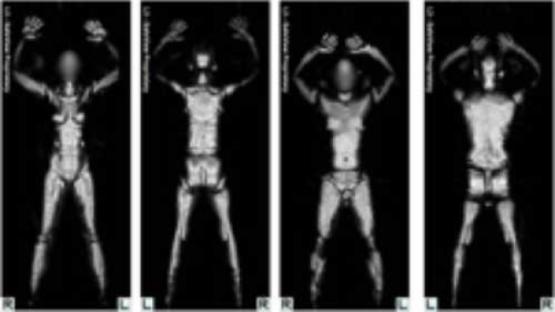PI statement on proposed deployment of body scanners in airports

The Active Millimeter Wave body scanners that airport security officials plan to use in greater numbers after a failed attempt to explode a bomb in a plane over Detroit raise troubling questions about passenger privacy, and ultimately the technology’s utility as a security measure.
While Privacy International supports the adoption of measures that will genuinely protect the security of passengers, we are deeply concerned that airport and security authorities increasingly deploy fashionable and unproven technology or intrusive measures on the basis of one-off security breaches. Allowing our security to be determined by knee-jerk responses is dangerous and counter-productive.
The jury is still out on whether this technology has any overall security value. A four-year trial at London’s Heathrow Airport that ended last year resulted in a decision to discontinue using the scanners.
The technology raises a number of troubling issues. First, the scanners produce strikingly graphic images of passengers’ bodies. Those images reveal not only our private body parts, but also intimate medical details such as colostomy bags. That degree of examination amounts to a significant – and for some people humiliating – assault on the essential dignity of passengers that citizens in a free nation should not have to tolerate. Deployment of the technology was recently halted at Manchester Airport in Britain in part because the scanners violated child protection laws by electronically strip-searching children and young people. There have also been calls in the European Parliament for a Europe-wide ban on the technology.
Second, Privacy International is skeptical about the privacy safeguards that the US Transportation Safety Administration (TSA) is touting. The TSA say that the technology is capable of obscuring faces, but this claimed protection is just a software fix that can be undone as easily as it is applied. And obscuring faces does not hide the fact that rest of the body will be vividly displayed. This is the equivalent of asking passengers to parade their bodies in front of the screeners, but with bags over their heads.
The TSA also say it will not retain the images. That protection would certainly be a vital step for such a potentially invasive system, but given the irresistible pull that images created by this system will create on some employees (for example when a celebrity or someone with an unusual or freakish body goes through the system), our attitude is one of trust but verify. We would like to see strong independent and legally binding assurance that the policy will be enforced and unchanged.
Third, we wonder how many of the people who submit to this bodyscan will also end up having to submit to a pat-down search because of limits in the technology’s ability to definitively identify suspected threats. Our impression is that a very high percentage of the passengers who opt for a scan will still wind up being physically searched because officials will have trouble distinguishing threatening objects from ordinary ones such as a wallet.
Fourth, contrary to the suggestions in many recent press reports it is far from clear that machines would catch a terrorist bent on bringing an explosive on board. The machines are known to have difficulties in detecting liquid explosive. Even more chillingly, they could not detect an explosive hidden in a body cavity. That is exactly the circumstance when an Al Qaeda operative tried to assassinate a Saudi Prince.
Finally and perhaps most importantly, the machines are extraordinarily expensive and will draw scarce security resources away from more proven security measures.
The scanners sell for approximately $150,000 (USD) per machine. Many thousands would be needed to cover the world’s airports (there are well over 2,000 lines that would need to monitored in the US alone). And that does not even begin to cover the extra personnel required to operate them and more importantly monitor the images they create.
Security is a zero sum game. We have a finite amount of money to be spent on fighting the war on terrorism. Every dollar spent on non productive airport security is one less dollar to be spent on the traditional police and intelligence work that thwarted the recently exposed plot or that should have been employed to tie together the various threads that would have kept the accused terrorist off the flight to Detroit.
The internationally renowned security technologist Bruce Schneier put it well.
… (u)nfortunately for politicians, the security measures that work are largely invisible. Such measures include enhancing the intelligence-gathering abilities of the secret services, hiring cultural experts and Arabic translators, building bridges with Islamic communities both nationally and internationally, funding police capabilities -- both investigative arms to prevent terrorist attacks, and emergency communications systems for after attacks occur -- and arresting terrorist plotters without media fanfare
If these machines are used, it must only be when the facts suggest it is absolutely necessary and not on all travelers; in a non-discriminatory fashion assuring the strongest degree of privacy possible; and when subject to strict oversight to prevent against the misuse of the images.